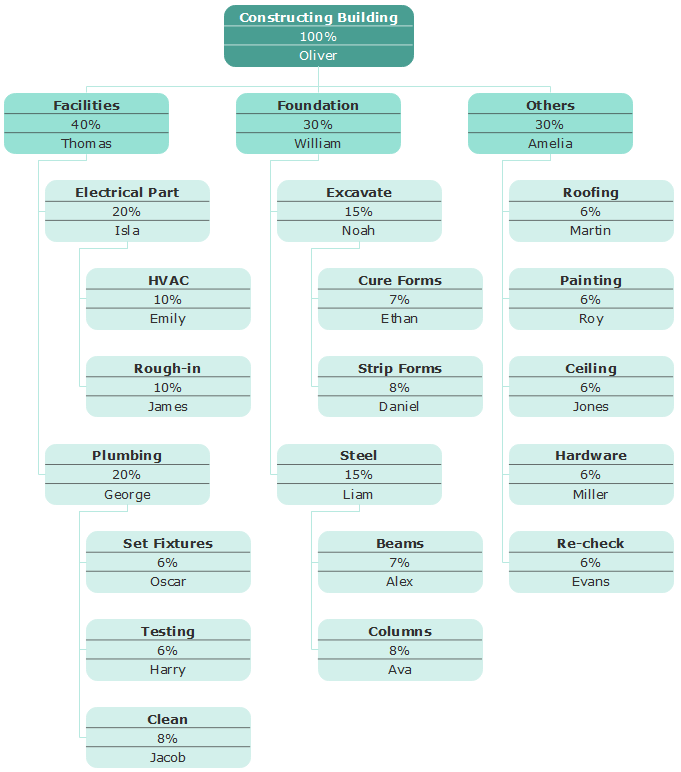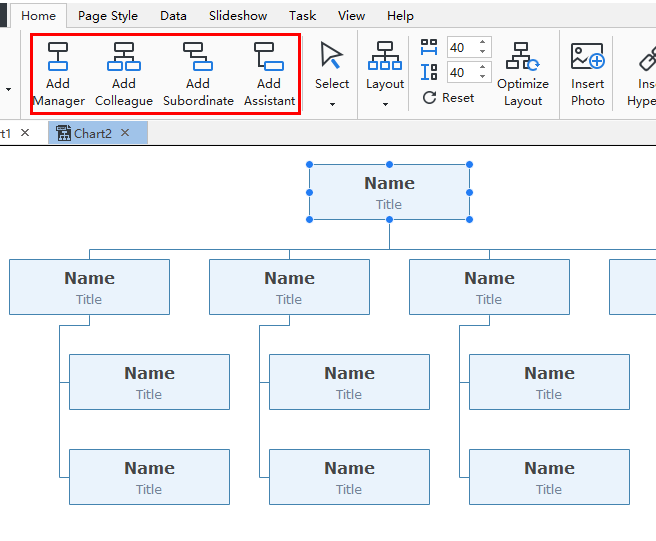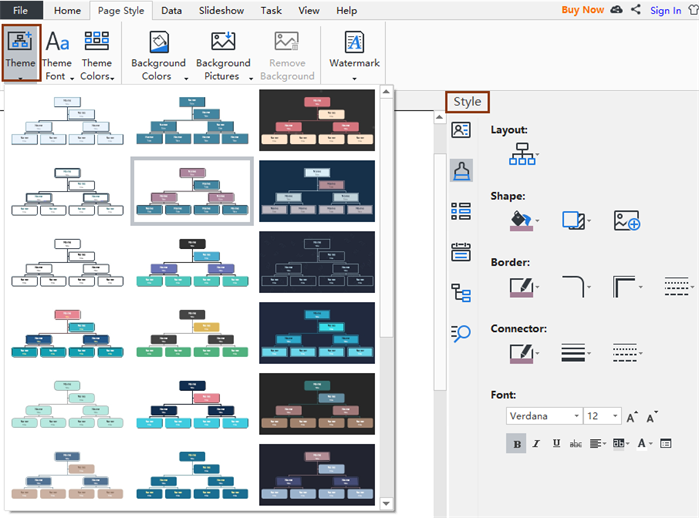If you don’t have much experience in project management and you feel really panic about your current project, then try the work breakdown structure (WBS) to plan, manage, and evaluate your projects. Now, let’s explore more about WBS and find out how to create it.
What is a Work Breakdown Structure?
The structure usually starts with the main project objective and breaks it down into smaller and manageable parts for your team to analyze. Moreover, a work breakdown structure normally focuses on individual deliverables (work packages) or milestones. Here is a work breakdown structure example that shows you how to construct a building:

- Org Chart Made by the Free Download Org Chart Creator
- More Innovative Org Chart Creator for Your Business
Work Breakdown Structure Key Benefits Overview
Such a structure helps you to:
- Think critical details for your project planning, for example, the estimate of your project cost, the risk of your project etc.
- Check out your project based on a comprehensive view. This is essential for you to decide on a project timeline or schedule.
- Easily track your project progress, even for multi-projects at the same time.
- Quickly establish dependencies.
- Efficiently assign tasks and resources to your team members.
How to Conduct a Work Breakdown Structure Analysis?
Step 1 – Communications
Bring your team together to discuss any key factors (project vision statement, project phases, project scope, stakeholders’ needs, task list with deliverables etc.), identify any overlapping duties. This step is helpful to explore your project from different points of views. To be more specific, your team should do the following:
- Understand Your Project’s Scope – Your team should know how to deal with any unexpected changes that may influence your project deliverables.
- Decide Key Deliverables – Now you should define level one, level two and more for your projects with details (e.g. task name, task leader, task cost etc.). Also, keep in mind that each deliverable should be managed by an independent team. For instance, if you are working on an office construction plan, then at the level two of your work breakdown structure you should assign different groups of staff for the build of foundation or interior design etc.
- Decide Work Packages – Normally, a work package is an independent and estimateable deliverable that at the lowest level of your work breakdown structure chart. It is also used to accommodate any changes in your project scope. What you should do is subdivide your project continuously until you think the components you defined are sufficient for your plan.
Step 2 – Create Your Work Breakdown Structure Chart
You can choose different WBS formats, such as the text-based hierarchical structure with numbers and decimal points. Alternatively, you can use a table-based, or organizational chart based like the machine production project below:

The overall creation process is quite simple. First, add your shapes based on your project planning and scope.

Next, insert more view options for your work breakdown chart with specific information like cost, team member, or progress etc.

Finally, you can try some different chart theme by using the built-in auto-create tools.

Step 3 – Assignments
Now it’s the time to assign tasks to your team members and track progress by using a whiteboard or cloud-based software. Every work package should be assigned to a specific member staff or team.
Any Further Reminders?
To improve your work breakdown structure chart, you may do the following:
- The 8/80 Rule – Each work package must between 8 hours and 80 hours in length, or no longer than a standard reporting period. For example, if you report work every week, then your individual work package should take within a week to complete. Decompose or group your tasks if necessary.
- The 100% Rule – You work breakdown structure chart should not include any extraneous or unrelated work. This helps you identify any gaps and redundancies.
- Mutually Exclusive – Every of your project element should be independent. Remember that do not include a sub-task twice. Otherwise, it will lead to miscalculations.
- Three Levels – A work breakdown structure chart normally has at least three levels. If you have more subtasks to be finished, just divide your original objective into more detailed levels.
Create Your WBS Chart with Edraw OrgCharting
Now, you know what is a work breakdown structure, why to use it, and how to conduct a WBS analysis. Try right now to create your own work breakdown structure chart with this easy org chart creator to conveniently edit the built-in template and change the default layout!

